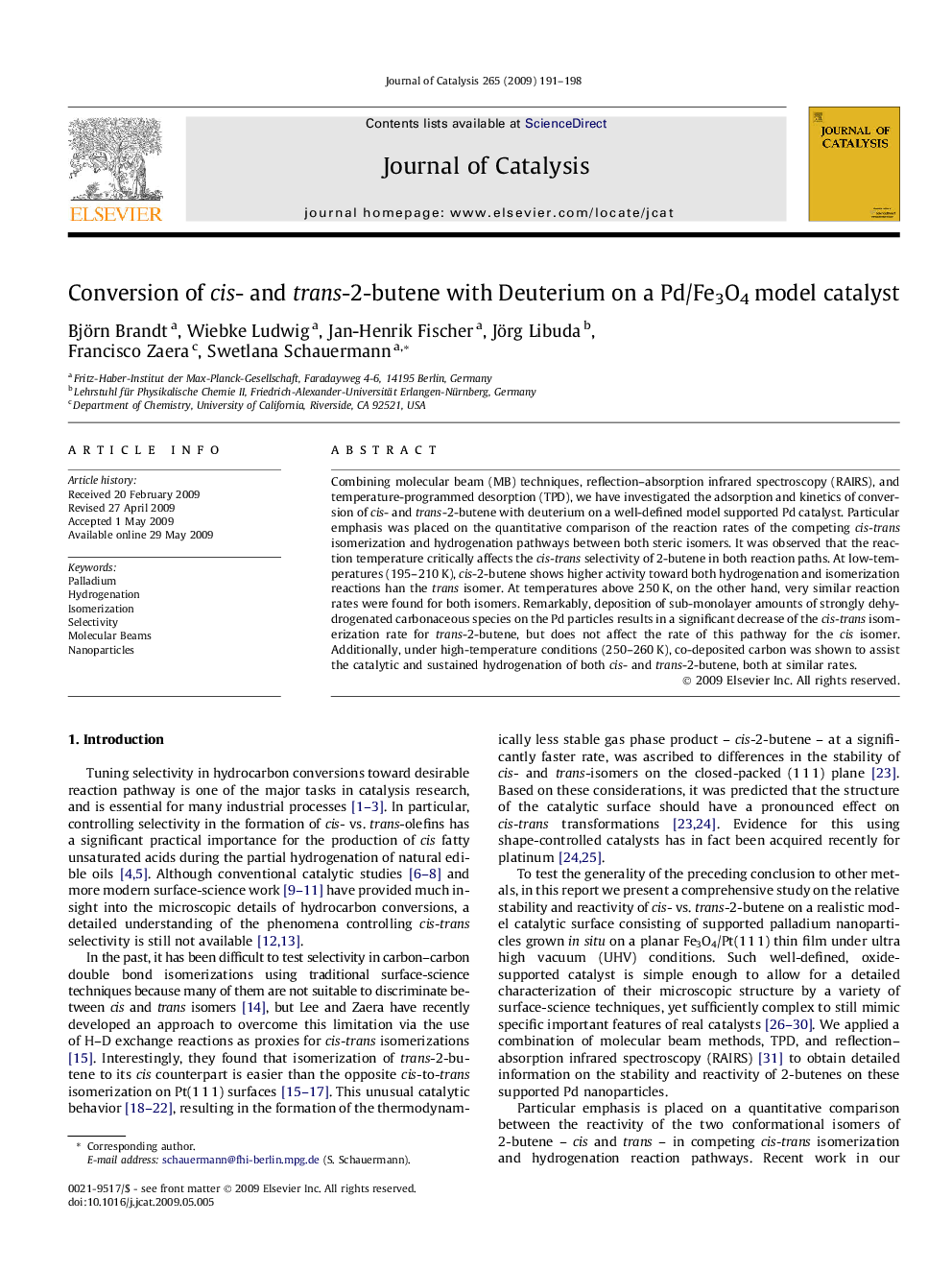| Article ID | Journal | Published Year | Pages | File Type |
|---|---|---|---|---|
| 62179 | Journal of Catalysis | 2009 | 8 Pages |
Combining molecular beam (MB) techniques, reflection–absorption infrared spectroscopy (RAIRS), and temperature-programmed desorption (TPD), we have investigated the adsorption and kinetics of conversion of cis- and trans-2-butene with deuterium on a well-defined model supported Pd catalyst. Particular emphasis was placed on the quantitative comparison of the reaction rates of the competing cis-trans isomerization and hydrogenation pathways between both steric isomers. It was observed that the reaction temperature critically affects the cis-trans selectivity of 2-butene in both reaction paths. At low-temperatures (195–210 K), cis-2-butene shows higher activity toward both hydrogenation and isomerization reactions han the trans isomer. At temperatures above 250 K, on the other hand, very similar reaction rates were found for both isomers. Remarkably, deposition of sub-monolayer amounts of strongly dehydrogenated carbonaceous species on the Pd particles results in a significant decrease of the cis-trans isomerization rate for trans-2-butene, but does not affect the rate of this pathway for the cis isomer. Additionally, under high-temperature conditions (250–260 K), co-deposited carbon was shown to assist the catalytic and sustained hydrogenation of both cis- and trans-2-butene, both at similar rates.
Graphical abstractConversions of olefins with hydrogen, such as cis-trans isomerization and hydrogenation, can critically depend on the steric structure of the reactant. Molecular beam experiments with cis- and trans-2-butene on a supported model Pd/Fe3O4 catalyst reveal reaction conditions leading to different reactivities for the steric isomers.Figure optionsDownload full-size imageDownload high-quality image (164 K)Download as PowerPoint slide
